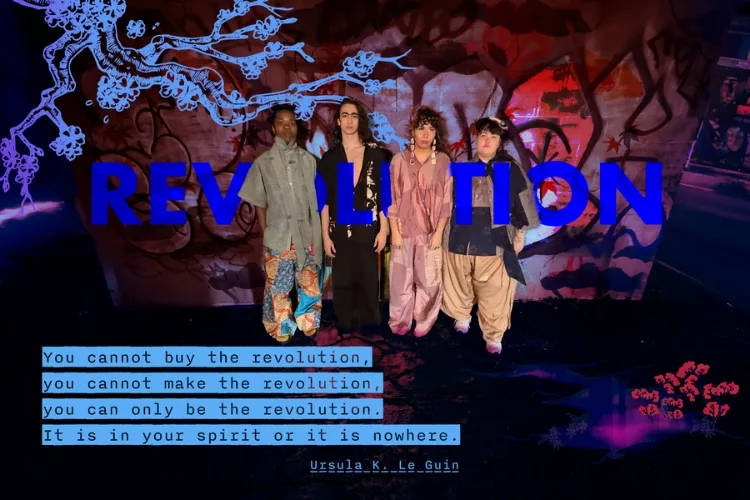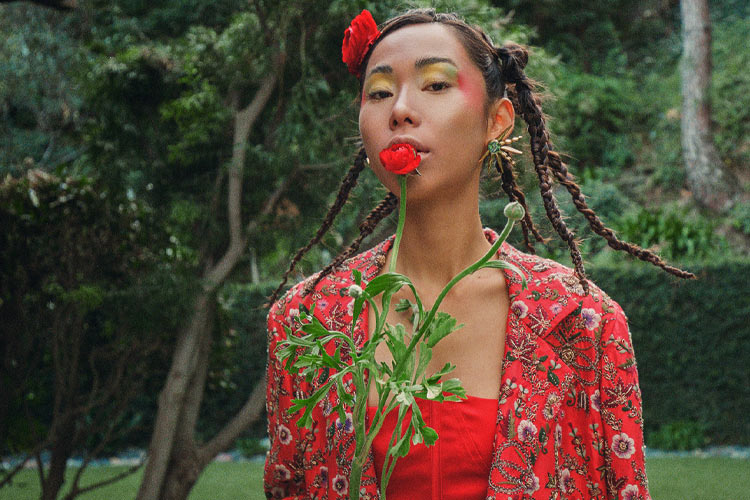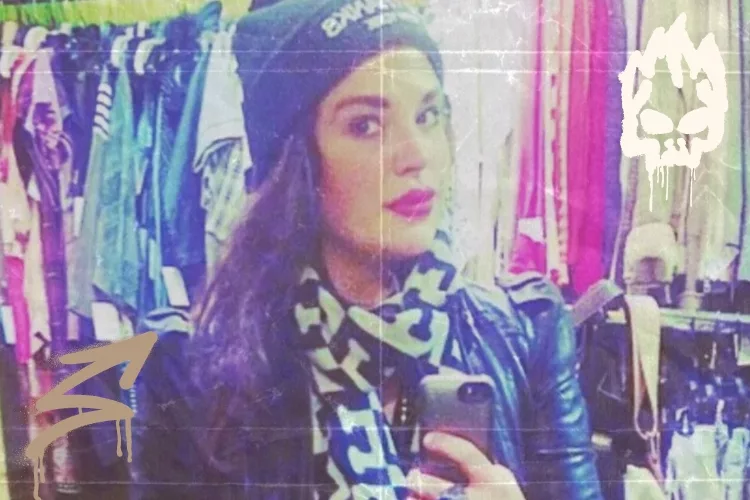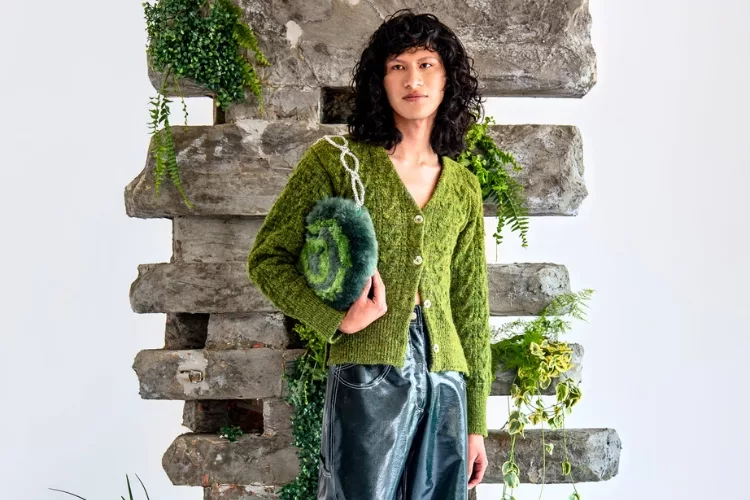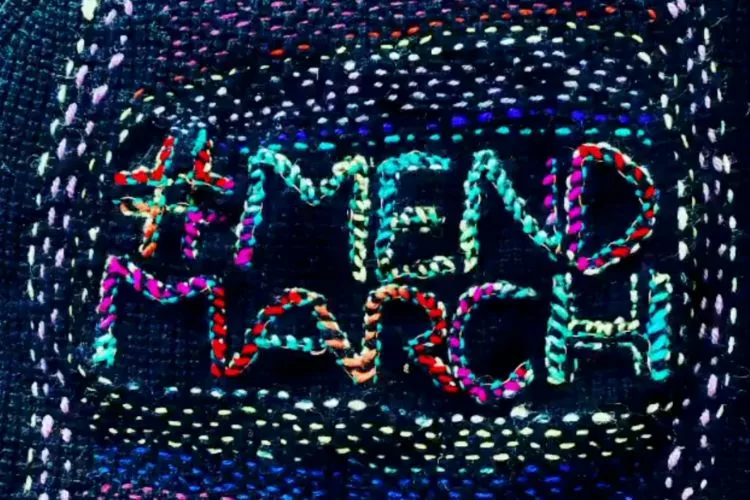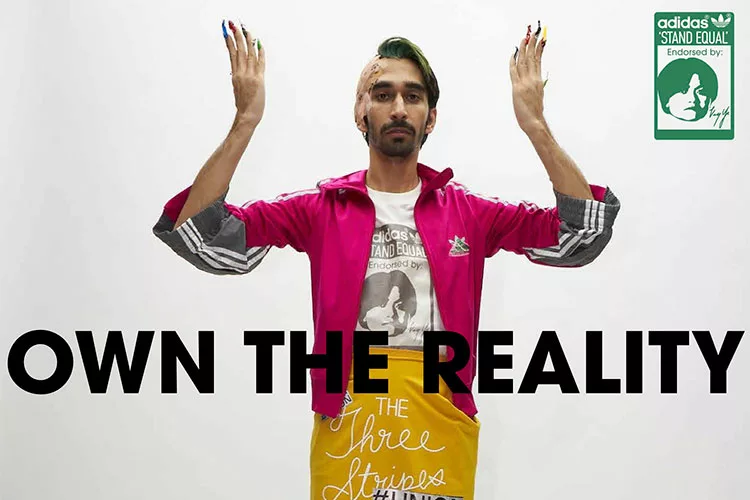
We chat with the designers behind the looks of the REALITYWEAR Collection
Despite how problematic the fashion industry is, we still can’t help but get excited when fashion weeks happen. We love to see the culmination of a designer’s vision. And support all the people who make it happen –the hair and make-up artists, the set and sound designers, models, PR people and countless others needed to make the show successful.
And beyond the clothes, there are always memorable –and sometimes controversial– moments on the runway. Think Alexander McQueen’s Joan of Arc finale with a model surrounded by flames in 1998. More recently, Coperni attempted to break the internet with a questionable spray-on dress last season, only to follow that up with a robot dog this season.
But by far, our favorite fashion moment this season came during Berlin fashion week at an Adidas show…that wasn’t actually Adidas! Instead, it was an activist act spearheaded by the Yes Men and the Clean Clothes Campaign to highlight Adidas’ exploitation of workers. But it had all the trappings of an actual show, including a press release, invitations and a spot on the official Berlin Fashion Week calendar.
Paula Keilholz and Isabell Schnalle, aka Threads and Tits, came aboard as the designers. They were tasked with producing an entirely believable show and collection.
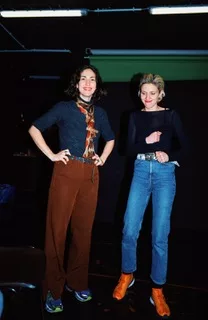
No Kill Mag: What is Threads and Tits?
Paula: We work in the space between activism and education. We think about alternative ways of seeing fashion and exploring what fashion could be and work a lot with narration. We believe there is a mind-behavior gap and that storytelling helps to bridge it.
For example, take the horrible working conditions in fashion. People know it but don’t often behave as they know it. So that’s why we came up with this storytelling and narration thing.
So you’re both fashion designers by training?
Isabell: Yes, we started together at the Berlin University of the Arts and got to know each other there. I am also a trained dressmaker. We are currently doing the same Master’s program called Transformation Design, which is less about fashion and more about systemic change.
During our Fashion Design training, we both realized that we wanted to work as something other than fashion designers in the classical sense. We didn’t want to be cogs in a machine that was frankly broken. Most of the logic in the fashion system fundamentally breaks with our understanding of fairness and justice. We don’t want to support any of that. We are convinced that we need to develop systems that are counter-hegemonic to the dominant fashion system. And what we are talking about here is one of the counter-hegemonic narratives that we want to create through storytelling.
Were you involved in activism before this REALITYWEAR project? Or is this the first time? It seems so entirely in the activist space.
Isabell: Yes, I am active in a network called Klasse Klima and we work as a student-organized initiative for climate justice in Arts and Design Education. Of course, there is more activism in my life, but this is one of my activist backgrounds. But REALITYWEAR is a form and scale of activism I hadn’t done before.
Paula: Klasse Klima is also about changing perspectives and seeing that you can be a teacher and learn at the same time and challenge hierarchies. So working within the system, trying to build up and also allow students to make suggestions for classes and how they actually want to learn and how they want to work afterwards.
You can be a teacher and student at the same time. It’s quite nice.
Isabell: And to complete the theme of activism: activism can happen in many ways. I can be an activist in my private household or I can go out on the streets to fight for something. Activism can be quiet and loud, visible and avoidably invisible.
Paula and I both tend to question everything! And that leads to activism that we have been doing since we started challenging systems. I think activism comes from questioning and not stopping to question.
How did you two get involved with this particular project?
Paula: We know people from Peng! Collective. They do very similar actions to the Yes Men but in German-speaking countries. They also work with art, activism, and hacking. So they made the connection. We started as designers with the project, but then we got more involved because we were the people in Berlin. The only ones who were there from the very beginning.
Since we have this fashion background, our part was to make the entire production believable in the fashion world.
Isabell: Yes Exactly! Because of our background, we know the codes of the fashion world and how to make them credible. When we think of brands like Balenciaga, they can turn anything into fashion. We decided to do that too.
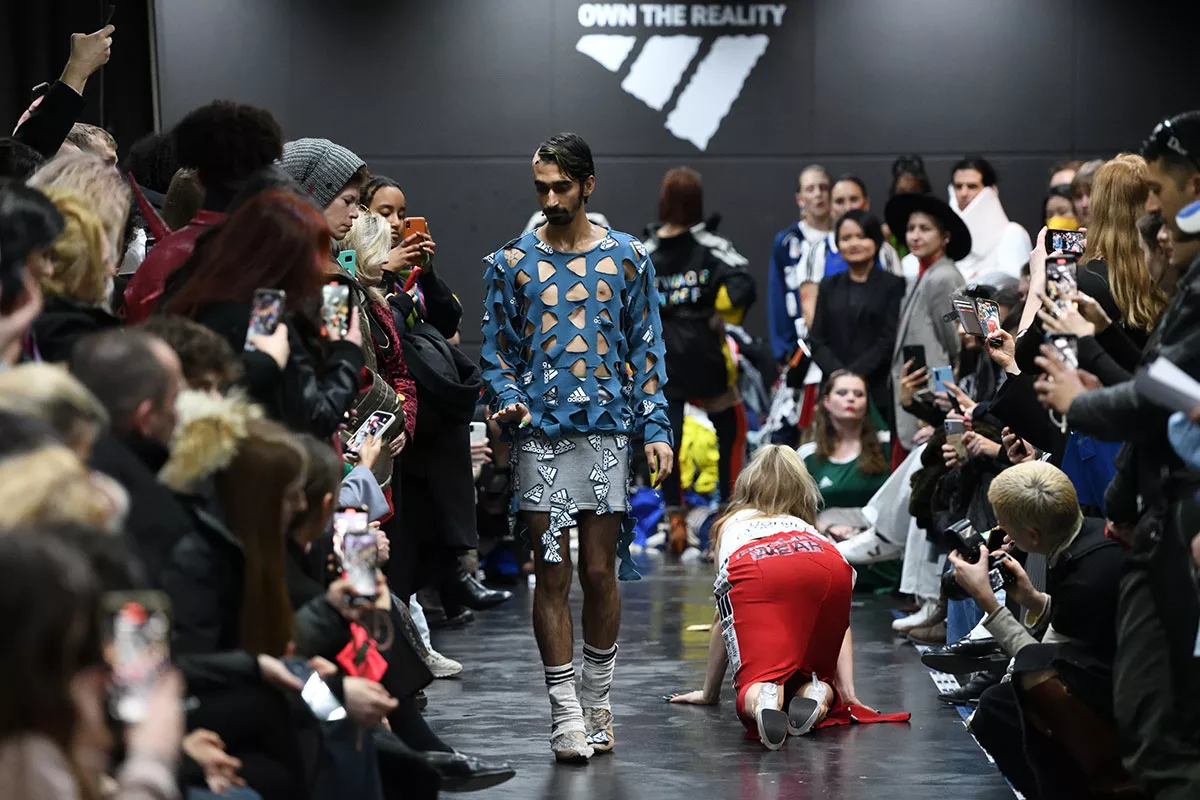
What was the design process like to make this collection that had a very specific purpose? Was it to get a look that could be considered believable and yet so subversive?
Paula: Yeah, it’s a very fine line. We discussed this a lot because making something subversive in the fashion world is challenging. Subversion is a kind of motor of fashion. It’s normal to do provocative things; it just makes people buy more and not question anything.
And we had the feeling that we could possibly get sued by Adidas, but at the same time, we could get hired by Adidas, right? So, it’s like a very thin line we were walking. And in establishing the collection, we also worked very closely with the Clean Clothing Campaign. We tried to translate the main issues of the garment workers into clothing.
Essentially every garment has a theme and tells the story of one of the main problems in this kind of sweatshop. For example, the extreme heat or breathing in textile dust. Naturally, the workers have a lot of breathing and health issues connected to that.
And so, how does something like extreme heat, for example, translate into fashion?
Isabell: We looked up all the serious injuries caused by working in the textile industry. And then, we tried to translate them and tell the workers’ stories. But of course, there are always limits. The workers’ stories are completed by the models’ movements, hair, and make-up. For example, we placed Adidas stripes in the shape of wounds on their faces.
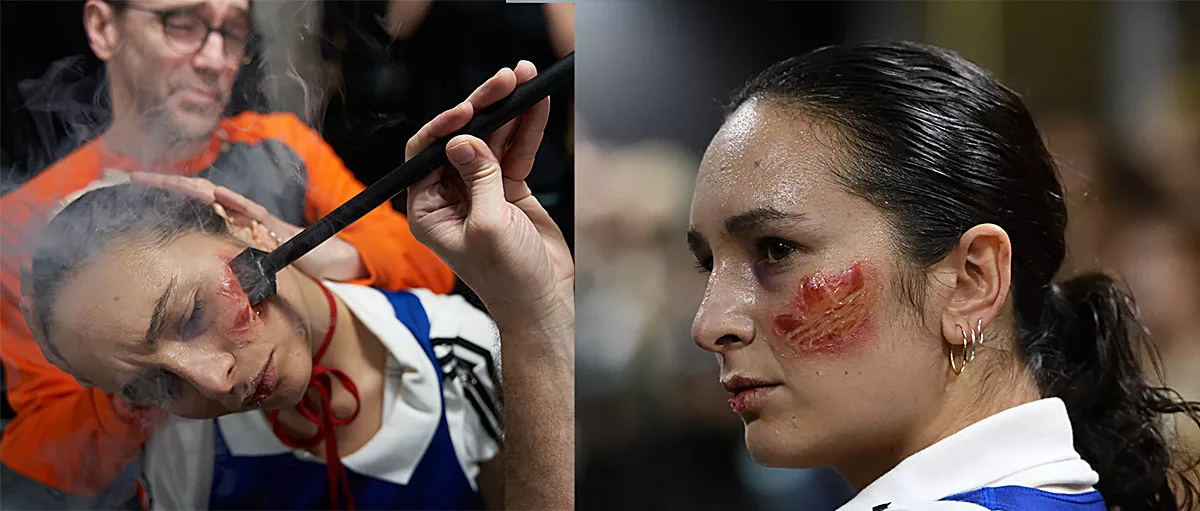
Yes, we saw that! Did models actually get branded with the Adidas logo for real, or was that fake?
Paula: It was make–up, that was fake.
That’s good because there’s committed and then there’s crazy! I have to say it looked really real and we thought it was – we’re relieved it wasn’t real!
Paula: Yeah, we were working together with a really great make-up artist and she specializes in these things. And then we had this fantastic prop guy who built this prop, producing smoke and glowing. So it looked authentic.
How did the audience react to that?
Paula: This was the entry point – the very first look. People were really shocked. You could see that on their faces. The reactions around the runway were quite hard to read, but we wanted to provoke people –for them to have a reaction. And get a sense of the reality of the workers. So the catwalk was extremely slow compared to a typical runway show.
Isabell: Each style and outfit had a name, which was announced by Mike from The Yes Men. The names were all very ironic and disturbing –kind of weird and funny.
He announced the outfits, and then the model entered. Before that there was a speech by Len, the co-CEO and Mike. So that was basically the only introduction. And then the performer/model and the outfit itself had to speak for what it actually was and what kind of injury it might have been.
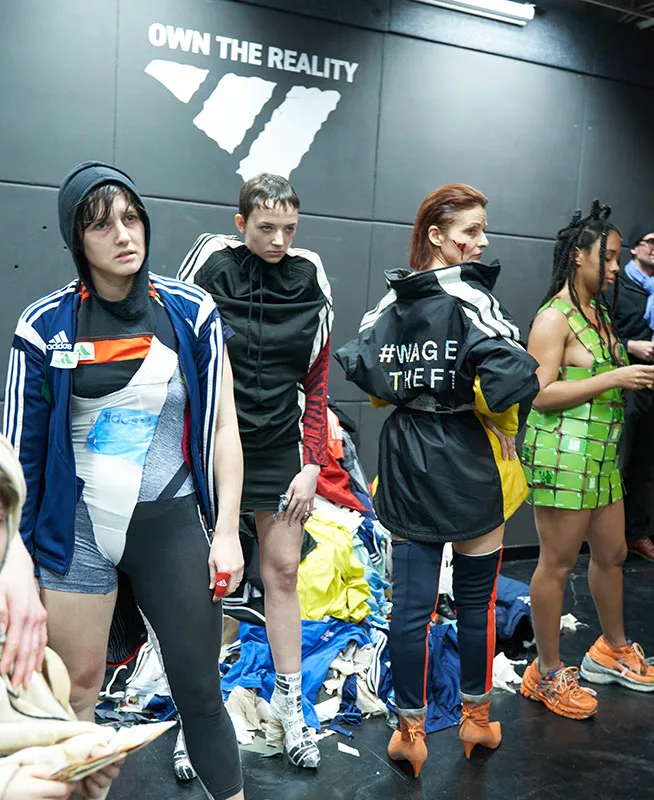
Tell us about the design process
Isabell: We are the designers only at the very end. We worked with existing Adidas garments, so there were many more hands involved than ours. So basically we think about who the people were who first made the garments in the factory and then go back to their history.
So, for example, with the extreme heat. We melted things and worked very experimentally with things that were already there. An additional challenge for the design process was to imagine that the textile workers themselves wore these garments for six months (according to the press release). So we asked ourselves what the garments would look like if workers had worn them for that long in those conditions.
We had never heard of the Yes Men before learning of this project. You mentioned they came up with the names of the garments. How were they involved with the fashion show part of it?
Paula: The Yes Men’s specialty is announcing something good in the name of a “big corporation” to actually make them do good. They are really good with the media and invited all the press to the event. They made the website (with the announcement of the new co-CEO) and brought people on board. We created the show and the event together in Berlin. But the Yes Men traveled to Cambodia, where they met union leaders and again researched and learned about working conditions.
There, they also got to know Len, who then came to Berlin and was our new co-CEO. They also produced the video for the show.
Were there any reactions to the show that surprised you either in a good way or a bad way?
Isabell: I was surprised by both extremes. That people actually started to be very sad – they cried a bit. I didn’t expect that. But it was so shocking for them. There were only a handful of people who did that. But still, I was shocked by it. And I was also shocked by the people who came up to us and were happy that we did that and still thought we were Adidas. A few even asked us for a job!
A bit opportunistic!
Isabell: Yeah, we didn’t expect that, and it surprised me. But OMG, we were so convincing that people started crying! That’s really good in a funny, weird way!
Paula: The crying happened when the co-CEO told her personal story of being in a garment factory as a child. And people were really touched. And it was bizarre because the whole thing was loaded up with irony, and we gave them many hints that this might not be Adidas.
We’re telling a story, but people still bought into it because there’s truth in the story even if the details are made up. I think also it’s in the fashion context, so people just didn’t suspect anything. So afterward they were a bit sad, but they were still asking for jobs and trying to make connections to Adidas.
And we were sending people back and forth between us because we didn’t know how to react or what to say. It was really intense.
You had a lot of disappointed people who wanted to work for Adidas and then realized, no, I don’t want to work for Adidas?
Isabell: I think people found it inspiring that Adidas is so open about their flawed behavior that it’s cool to work for them again.
How could you possibly have gotten the official Fashion Week schedule? That’s really tricky.
Isabell: We made good use of all our contacts in the fashion world.
This leads us to the point I had forgotten before which is: to make this as realistic as possible, we had to ask, What would Adidas do next? For example, what would the next collaboration with Balenciaga or Gucci look like? What would the design look like in the context of the planned collaboration? What location would they choose, and what wording would they use?
I would say thinking about Adidas in collaborations and framing questions like this was like an alter ego and helped us design the garments.
Paula: So always trying to twist it just a bit more to the point that it’s not that believable in the fashion world anymore –but still is a tiny bit.
It’s great. You did a phenomenal job. It’s something that is just so tinged with both pathos and great humor and intelligence. These kinds of actions – if we can just keep building on them can allow people to better understand what goes on behind the scenes of their favorite brands. And hopefuly inspire change.
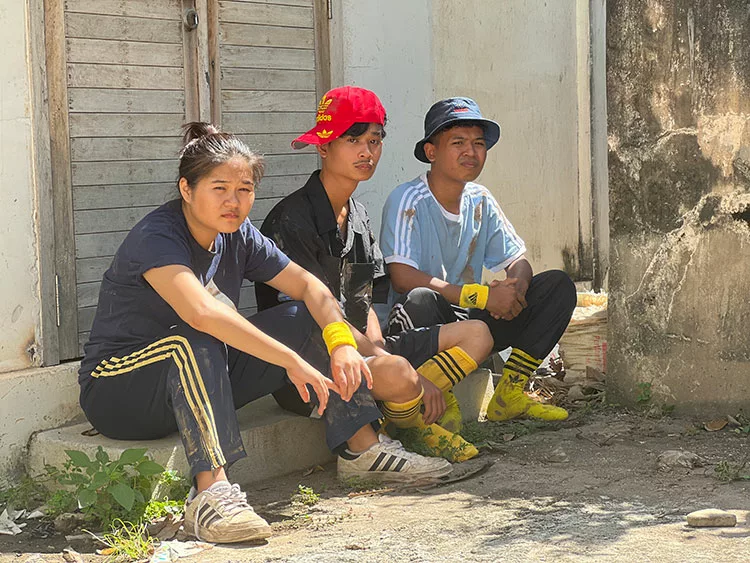
Learn More & Get Involved
______________________________
Read our interview with Ilana Winterstein of the Clean Clothes Campaign
photo by Keil Troisi
–Katya Moorman + KL Dunn
Related Articles


